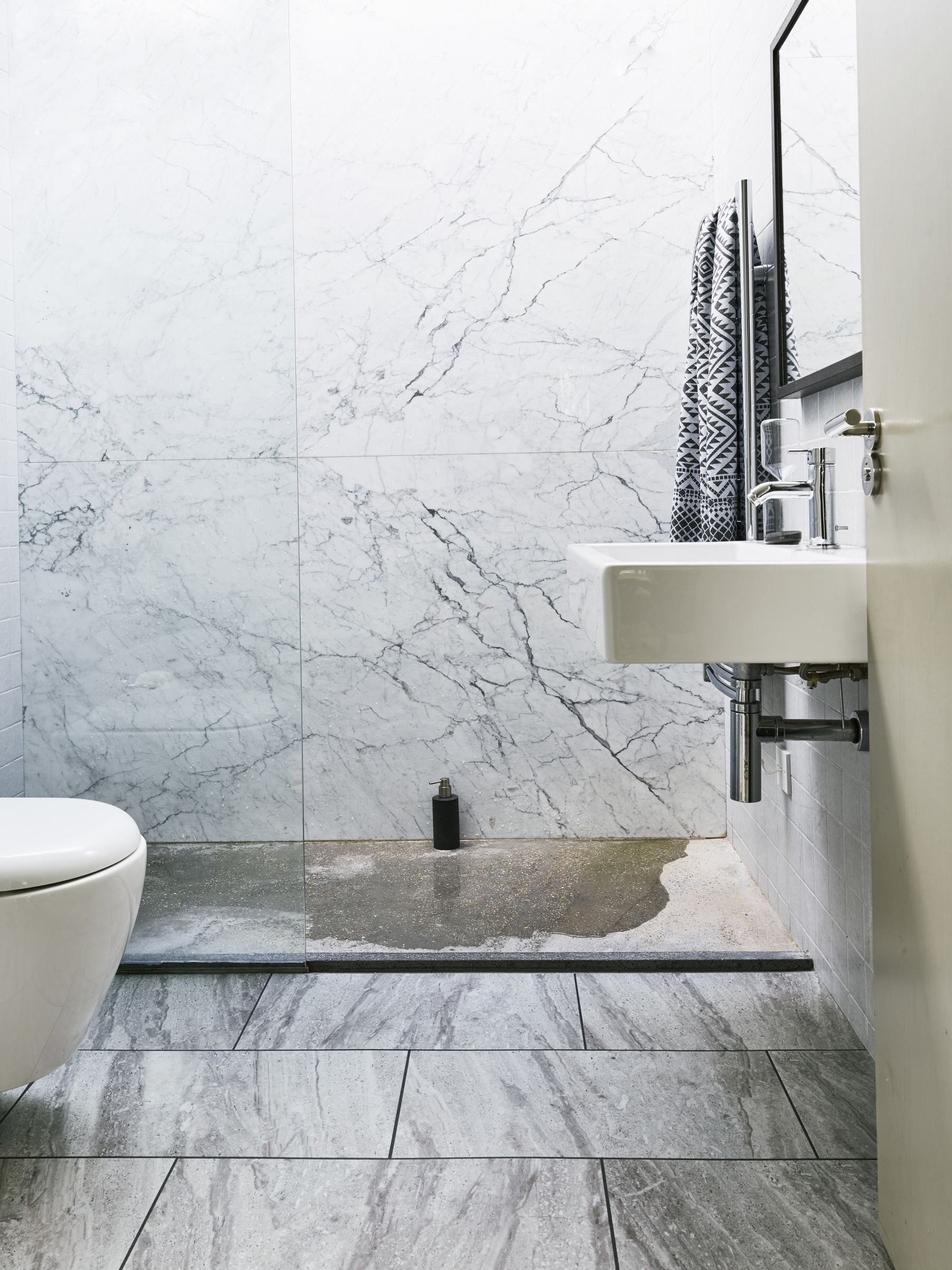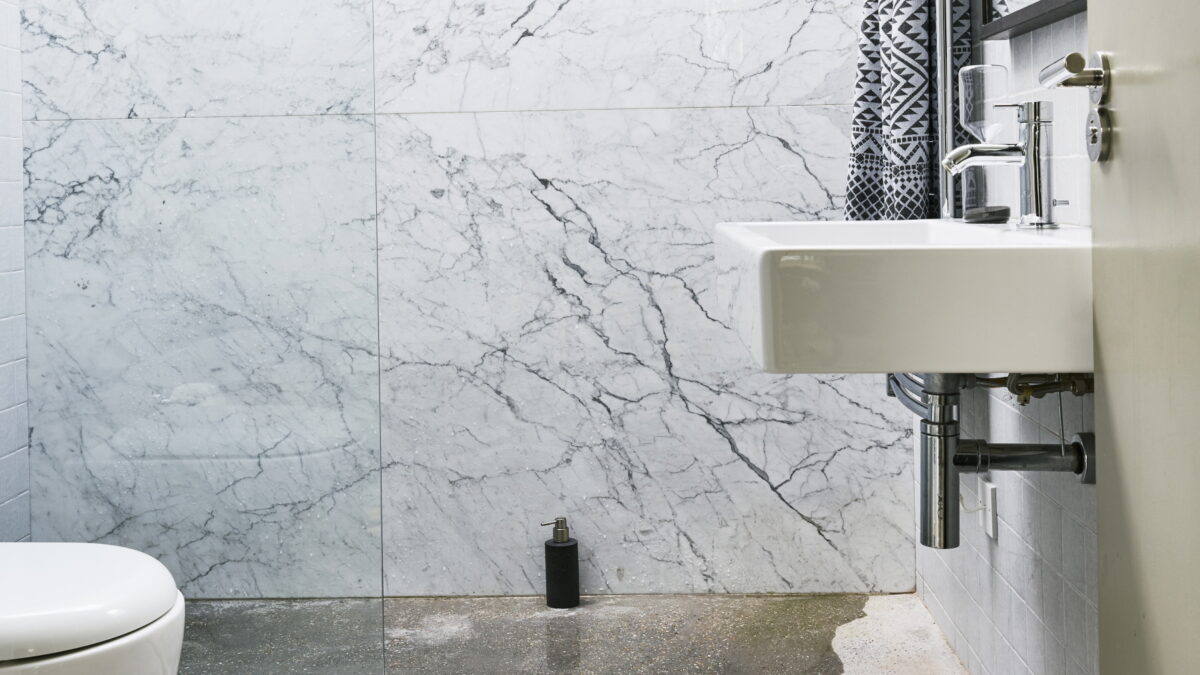When it comes to refreshing your bathroom flooring, vinyl plank flooring often emerges as a frontrunner. You might wonder whether it’s suitable for bathroom installation. The answer is a resounding yes! Favored for its robustness, water resistance, and array of contemporary designs, vinyl plank flooring is an excellent choice for bathroom settings. Despite its numerous advantages, every material has its trade-offs. It’s crucial to weigh the benefits against the drawbacks and to be mindful of particular installation precautions. Here, we’ll explore the positives and negatives, as well as the essential aspects to consider when opting for vinyl plank flooring in your bathroom.
Pros of Installing Vinyl Plank Flooring
Vinyl plank flooring boasts numerous advantages that make it an outstanding choice for bathroom environments. Let’s delve into the key benefits:
- Waterproof Capabilities
A primary benefit of vinyl plank flooring is its impressive waterproof properties. This feature is especially crucial in bathrooms, where moisture levels are consistently high. Vinyl’s capability to handle spills, splashes, and humidity safeguards your subfloor from water damage, making it ideal for such moisture-prone areas.
- Durability and Longevity
Known for its robustness, vinyl plank flooring is engineered to endure heavy foot traffic, perfect for busy households. It outperforms traditional hardwood in moisture-rich environments by resisting warping and cracking. A high-quality vinyl plank floor can maintain its integrity and appearance for many years, even amidst the damp conditions common in bathrooms.
- Ease of Cleaning and Maintenance
The low maintenance requirements of vinyl plank flooring are a significant plus. Effortlessly cleaned with a simple wipe, spills and water pose no threat to this flooring type. Regular sweeping and an occasional mop will keep vinyl looking pristine. Its seamless design also minimizes grout lines,which can harbor dirt and moisture, unlike vinyl bathroom tiles.
- Cost-Effectiveness
Affordability is another compelling advantage, with vinyl plank flooring providing a cost-effective solution. When weighing it against the costs of ceramic tile, stone, or hardwood, vinyl emerges as an economical option that doesn’t compromise on quality or aesthetic appeal. For those seeking a luxurious feel, high-end vinyl designs offer the opulence of premium materials without the hefty price tag.
- Versatile Design Choices
The extensive selection of styles, colors, and textures available in vinyl plank flooring ensures that you can find the right match for your bathroom’s decor. Whether you desire the classic elegance of wood, the sophistication of stone, or contemporary patterns, there’s a vinyl plank to fit every taste. These options empower you to elevate the visual charm of your bathroom affordably.
Cons of Installing Vinyl Plank Flooring
Despite the numerous benefits of vinyl plank flooring, there are some drawbacks to consider as well:
- Subfloor Sensitivity
Even though vinyl plank is waterproof, the condition of the subfloor during installation is crucial. Any existing moisture or damage beneath can compromise the flooring’s stability and longevity over time. It’s essential to thoroughly prepare and repair the subfloor prior to installing vinyl flooring in your bathroom, ensuring a solid foundation for years to come.
- Temperature Sensitivity
Vinyl flooring might not be the coziest option underfoot, particularly in a bathroom where the floor can feel chilly. This characteristic is more prominent in cooler climates due to vinyl’s lack of insulation. Minor adjustments, like placing bathroom rugs or installing a radiant heating system beneath the flooring, can mitigate this cold sensation, enhancing comfort.
- Potential Impact on Resale Value
While vinyl plank flooring is practical and versatile, it typically doesn’t add as much resale value to a home as premium materials like ceramic or stone tile might. Considering the material preference among some potential homebuyers tends towards more traditional bathroom finishes, it’s important to weigh the possible influence of vinyl on your property’s market appeal.
Precautions When Installing Vinyl Plank Flooring in a Bathroom
To ensure the optimal installation of vinyl plank flooring in your bathroom, it’s vital to follow several important guidelines:
- Proper Sealing: Crucial to the longevity of your flooring, make sure to seal the edges of the vinyl planks thoroughly. This is especially important near water-prone areas such as bathtubs, sinks, and showers, to prevent water infiltration beneath the surface.
- Choosing Waterproof Vinyl: It’s essential to know that not all vinyl planks are created equal. For bathroom installations, prioritize selecting waterproof options, which are specifically engineered to resist moisture effectively.
- Subfloor Preparation: The condition of the subfloor is paramount. Prior to laying down your flooring, confirm that the subfloor is dry, clean, and devoid of damage. In some cases, incorporating a moisture barrier or underlayment could provide additional safeguarding.
- Allowing for Expansion Gaps: Just like other flooring materials, vinyl planks necessitate small expansion gaps at the room’s edges. These gaps accommodate the natural expansion and contraction that can occur with humidity fluctuations, preventing warping or damage.
Vinyl plank flooring offers a multitude of advantages for bathroom renovations, including its water resistance, durability, ease of maintenance, cost-effectiveness, and diverse design options. With meticulous installation and proper care, it stands out as an exemplary choice for refreshing your bathroom space. Whether aiming for a cost-effective update or a stylish and functional revamp, vinyl plank flooring is a consideration worth exploring for your bathroom project.

Should you have any inquiries regarding vinyl plank flooring for your bathroom or any other area in your home, feel free to reach out to us at LX Hausys. Our experienced team is ready to assist, offering insights and solutions tailored to your home improvement needs.

